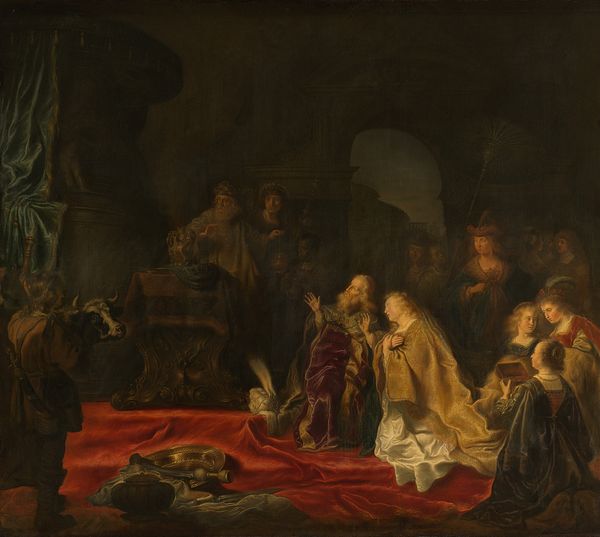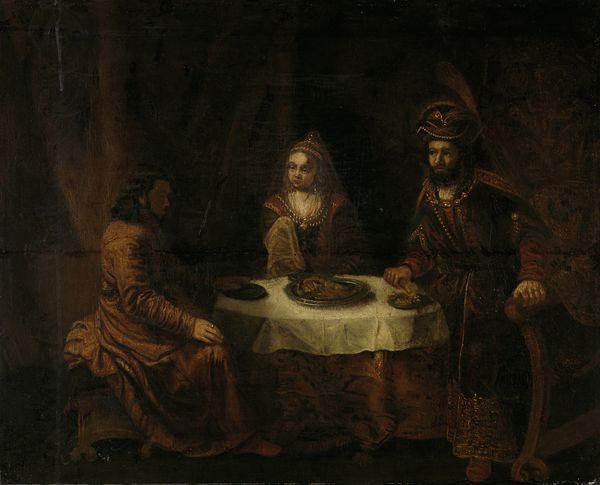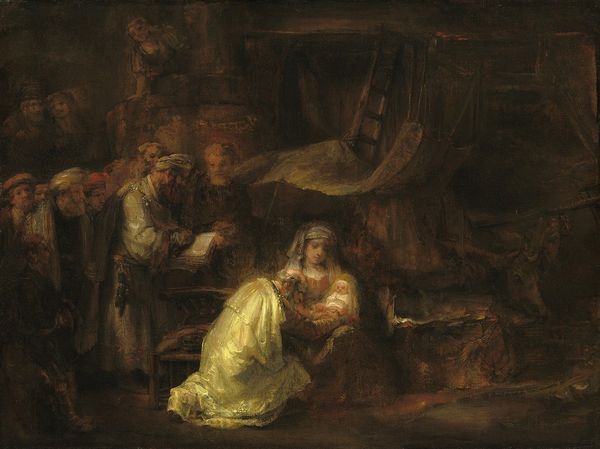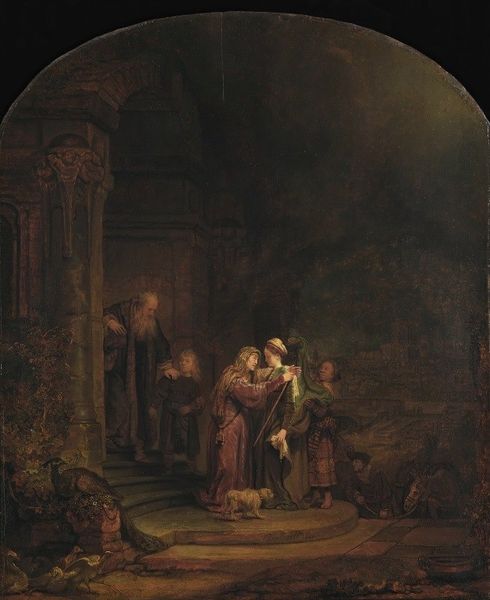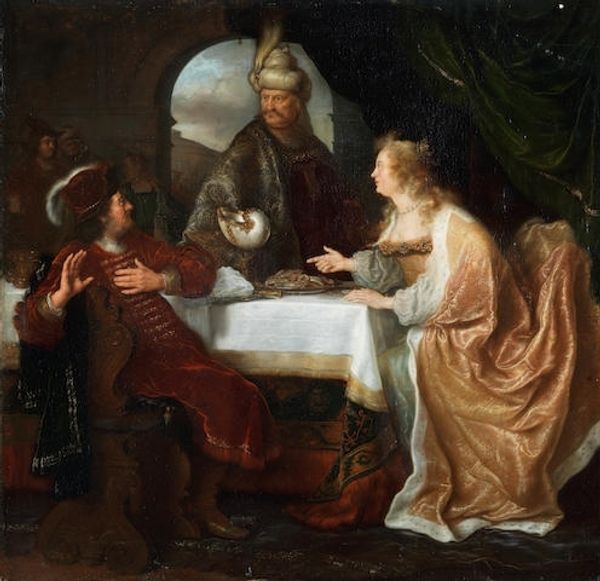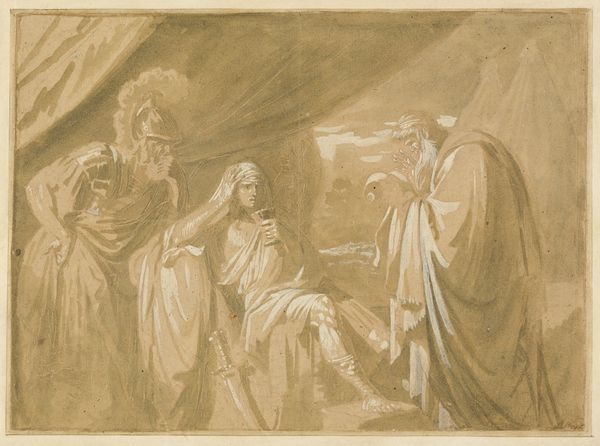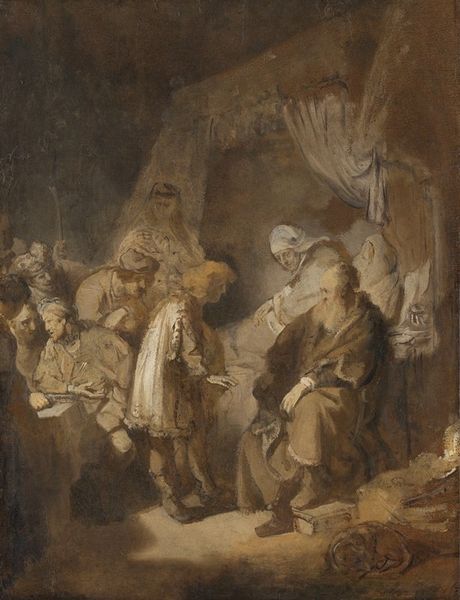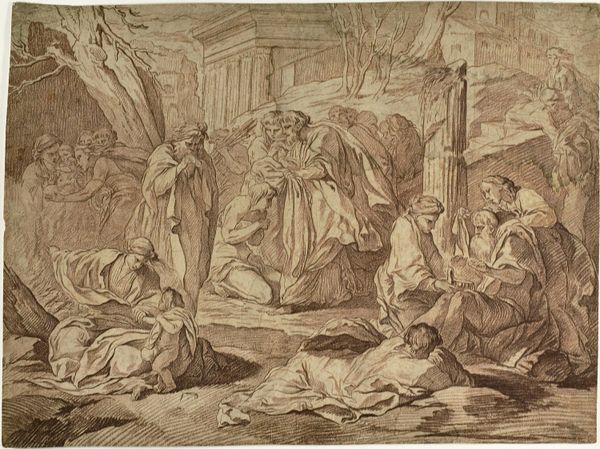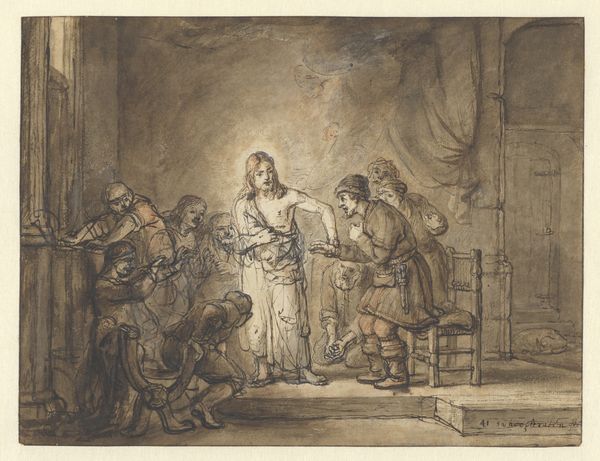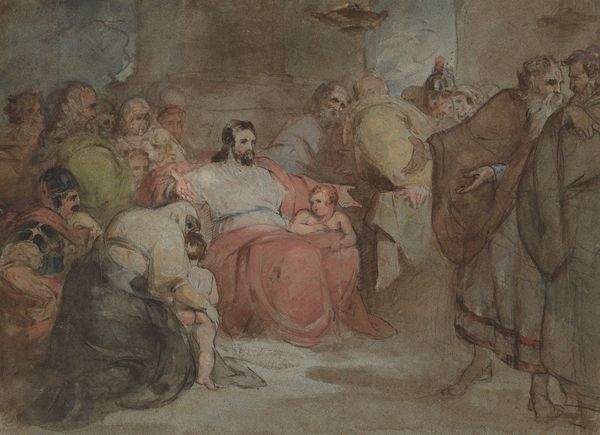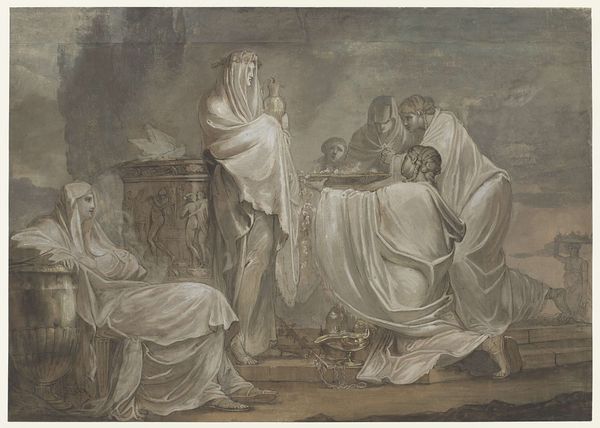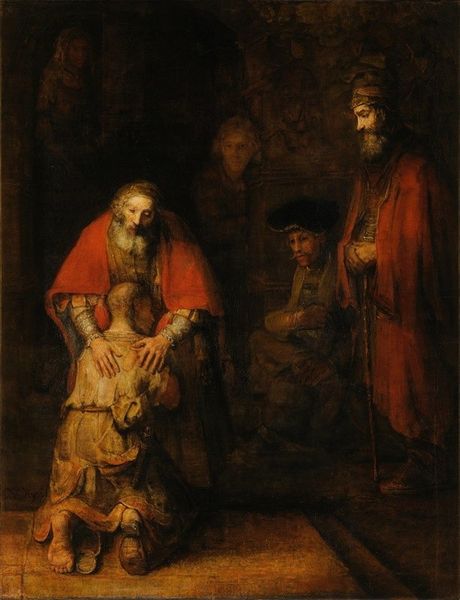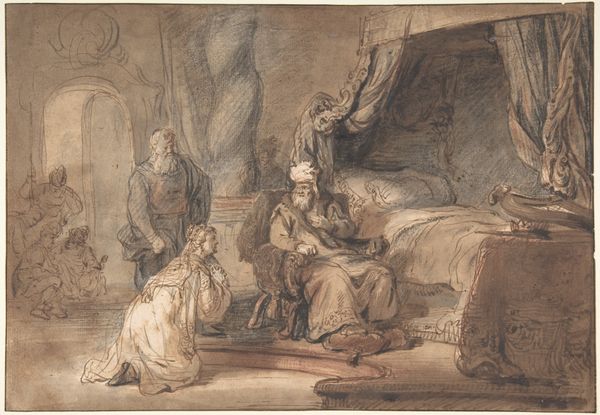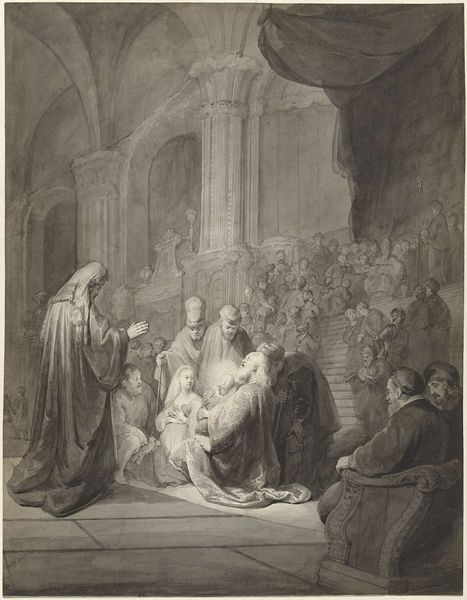
oil-paint
#
portrait
#
baroque
#
oil-paint
#
oil painting
#
men
#
history-painting
#
angel
Dimensions: 16 x 21 cm
Copyright: Public domain
Editor: This is Rembrandt van Rijn’s “Abraham Serving the Angels,” made in 1646 using oil paint. I’m really struck by the composition; the figures seem lit from within. What do you see in this piece, especially considering its historical context? Curator: This painting offers a lens through which to examine themes of hospitality, faith, and the divine within a patriarchal framework. The narrative, of Abraham serving the angels, can be seen as reinforcing societal expectations. The painting serves to solidify Abraham’s position and legacy within that system. Does this depiction of service, particularly Abraham's subservience to the angels, spark any thoughts about power dynamics within religious narratives for you? Editor: I guess I hadn't considered it like that. I was so focused on the drama of the scene, I didn’t really think about how it could perpetuate existing structures of power. The female figure lurking in the doorway almost feels like an afterthought. Curator: Precisely. The almost obscured figure of Sarah, lingering in the background, raises critical questions. What does her exclusion from the immediate interaction with the angels signify regarding women's roles and agency within that historical and social context? Her secondary presence subtly reinforces her position on the periphery of divine events. How might a contemporary artist engage with this scene to subvert those power dynamics? Editor: That makes me think of contemporary artists who re-imagine biblical stories, putting female characters at the forefront, exploring their untold narratives, or perhaps casting non-white actors. Curator: Exactly. This work prompts us to consider how art both reflects and perpetuates social norms, offering avenues for both critique and transformation through later interventions. It’s a fascinating point of entry when exploring intersectionality. Editor: I’ll definitely look at Baroque art differently now, with more focus on how social norms may appear in this period. Curator: Excellent. By examining historical artworks through contemporary lenses, we reveal the intricate relationships between art, identity, and the ongoing dialogue concerning social justice.
Comments
No comments
Be the first to comment and join the conversation on the ultimate creative platform.
